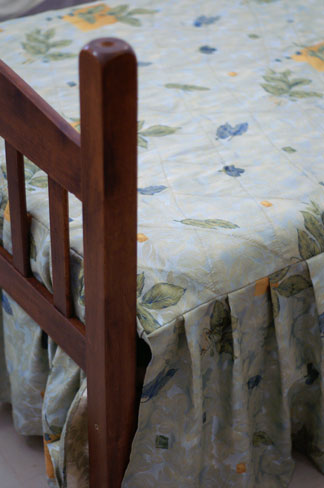Victor Margolin
Hotels today compete for customers with an escalating array of comforts, offering everything from high-speed Internet to 24-hour in-room massage. Key to their identities as sanctuaries for weary travelers are the luxurious sleeping appointments they provide. Engaged in what have come to be known as “bedding wars,” hotel chains like Starwood, Westin, and Kimpton offer thick mattresses with inviting names such as Heavenly Bed, Sweet Sleeper, and Serenity Bed.

But the beds are hardly a sweet dream for the housekeepers who make them. The combined weight of mattress, box spring, and duvet for a king-size hotel bed is 225 pounds. For a queen the total weight is 183 pounds. As a result, housekeepers have been experiencing an increasing number of back and shoulder injuries. A recent survey conducted by Unite Here, a national union representing hotel housekeeping staff, revealed that among 622 workers in various American cities, 91 percent had back or shoulder injuries related to their jobs, 67 percent had visited a doctor because of the pain, and 66 percent took medication to relieve it. As part of designing the customer’s experience of lotus-eating comfort, hotels provide luxuries such as chocolates on the turned down bed covers and even baskets of fruit as gifts of welcome. Or rather, their staffs do. Besides lifting heavy mattresses and changing three sheets and a half-dozen pillowcases per bed, housekeepers must also take time to stock rooms with all the bath amenities and minibar bottles guests have come to expect. They also have to wash the water glasses, coffee cups and coffee pot. And yet hotel managers have refused to extend the time needed to clean a room. Nor will they allow two housekeepers to work (and hoist mattresses) together, despite ergonomic studies showing that larger and heavier beds impose loads on the lumbar spine that are highly likely to result in back injuries.
In August 2005, Illinois governor Rod Blagojevich signed a law that would insure two 15-minute paid breaks for hotel housekeepers. The state's Hotel and Lodging Association challenged the new law in Illinois state court but their appeal was rejected in July, 2006, and the new requirement was finally put into practice in August. It’s ironic that although at least one chain offers a special slumber-inducing program that includes an eye mask, earplugs, lavender spray to promote relaxation, and a CD with soft music, no hotel manager appears to be losing sleep over the physical strain the bedding wars exert on employees. It’s also ironic that hotel companies plead poverty to forestall boosting the comfort of their working conditions yet have no trouble specifying costly amenities (whose expense they pass on to their guests). This is bad design, for design goes well beyond an object’s appearance and primary application to embrace all the social consequences of creating something new. Not only does design involve the user’s satisfaction but also the conditions of its production and maintenance. Thanks to Naomi Klein and other activists, consumers are now aware of the horrific working conditions in sweatshops abroad. This has caused the public to think differently about Nike shoes and Old Navy tank tops. Yet under our very noses, hotel workers in America are being exploited to enhance the comfort of hotel guests. Its time to establish federal guidelines for hotel housekeepers just as has been done for workers in other professions where hazardous tasks can result in physical injuries. It will be a fight to get the hotel industry to accept such guidelines. But human rights are at stake. By introducing new tasks for the housekeepers that demand greater physical exertion than in the past, the hotel chains are endangering their employees’ health. If they won’t recognize this on their own and do something about it, then others must step in to protect these workers. A heavy mattress may not be lethal but it can still cause serious harm.
Victor Margolin is Professor Emeritus of Design History in the Department of Art History of the University of Illinois at Chicago, and a founding editor of DesignIssues. A shorter version of this article appeared previously in ID Magazine.










